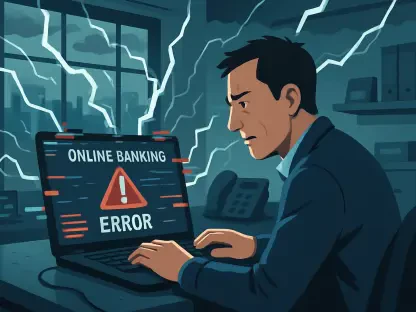Retail core banking systems have become the backbone of modern banking, underpinning virtually every transaction and customer interaction. As we look towards 2030, these systems are set to undergo significant transformations driven by technological advancements, evolving customer expectations, and stringent regulatory demands. The evolution is more than just an upgrade in software; it’s a complete overhaul in how banks operate, interact with their customers, and innovate. In this article, we will delve into the anticipated evolution of retail core banking systems over the next decade, examining key trends and the factors driving this transformation.
The Rise of Cloud-Based Core Banking
The shift towards cloud-based core banking systems stands out as one of the most transformative trends in the financial sector. Banks are increasingly favoring cloud solutions due to their scalability, flexibility, and lower upfront costs compared to traditional on-premises systems. The adoption of cloud technology allows banks to respond swiftly to changing business needs, enabling the quick introduction of new products and services. This adaptability is crucial in a fast-paced financial environment where customer demands and market conditions are in constant flux.
Moreover, cloud adoption greatly enhances the capability to manage and process large volumes of data efficiently, which is particularly important in an era where data is often referred to as the new oil. By leveraging cloud technology, banks can offer more personalized services, improve risk management, and enhance overall operational efficiency. Furthermore, cloud-based systems support seamless integrations with other digital banking services, fostering an innovative ecosystem. The era of cumbersome upgrades and prolonged downtimes is becoming obsolete, making way for real-time updates and uninterrupted service. The cloud not only provides technical benefits but also opens the door to a myriad of possibilities for better customer engagement and satisfaction.
Embracing Digital Banking Transformation
The demand for digital banking solutions is redefining the landscape of core banking systems. Today’s customers expect seamless digital experiences similar to those offered by tech giants like Amazon and Google. This shift necessitates a robust infrastructure capable of handling real-time transactions, onboarding processes, and customer support with minimal friction. In response, banks are investing heavily in technologies such as artificial intelligence (AI), machine learning, and blockchain. When integrated into core banking systems, these technologies offer enhanced security, faster processing times, and improved decision-making capabilities.
Banks are thus equipped to deliver superior customer experiences while maintaining compliance with stringent regulatory standards. Additionally, the rise of digital banking has spurred the development of innovative financial products and services. From robo-advisors and automated loan processing to personalized financial planning tools, core banking systems are at the heart of delivering these advanced capabilities to customers. This transformation not only meets the evolving demands of tech-savvy consumers but also positions banks to compete more effectively in a crowded market. As digital banking becomes the norm, the continuous evolution of core systems will be essential to meet growing expectations and regulatory requirements.
Expansion into Emerging Markets
Emerging markets present fertile ground for the growth of retail core banking systems. Regions characterized by rapidly growing economies and increasing digital penetration offer substantial opportunities for banks to expand their customer base. Key players in the industry view these markets as strategic avenues for growth and are keen to capitalize on the potential. The penetration of mobile technology in emerging markets is a significant driver of this expansion. Many individuals in these regions, previously unbanked, are now accessing financial services for the first time through mobile banking solutions. Retail core banking systems are evolving to support these services, enabling financial inclusion on an unprecedented scale.
As these markets continue to develop, the demand for sophisticated financial services is expected to rise. Local banks, along with global banking giants, are investing in modern core banking systems to meet this demand, fostering competition and innovation within the sector. The expansion into emerging markets not only helps banks increase their customer base but also enhances their global presence and brand recognition. By leveraging advanced technology and modern core systems, banks can offer high-quality services that cater to the specific needs of emerging market consumers, thereby driving growth and financial inclusion.
Overcoming Legacy System Challenges
Legacy systems pose one of the greatest challenges to the evolution of retail core banking systems. These outdated systems often lack the flexibility and scalability required to support modern banking needs, making the transition to new platforms both paramount and challenging. High migration costs and the risk of operational disruptions are significant barriers to replacing legacy systems. However, banks recognize the long-term benefits of transitioning to state-of-the-art core banking solutions. These benefits include improved agility, enhanced customer service, and a stronger competitive edge.
To mitigate migration risks, many banks opt for a phased approach, gradually integrating new functionalities while maintaining core operations. This strategy minimizes disruptions and allows for a smoother transition. Additionally, advancements in technology, such as APIs and microservices, are facilitating the interoperability between old and new systems, reducing the complexity of the transition process. Overcoming the challenges posed by legacy systems is essential for banks aiming to stay competitive and meet the rapidly evolving needs of their customers. By effectively managing the transition, banks can achieve a higher level of operational efficiency and innovation.
The Strategic Importance of Research and Development
Retail core banking systems serve as the cornerstone of contemporary banking, supporting nearly every transaction and customer interaction. As we approach 2030, these systems are poised for major transformations driven by technological innovations, changing customer demands, and strict regulatory requirements. This evolution isn’t merely a software update; it signifies a comprehensive revamp of how banks function, engage with their customers, and bring forth innovation.
Looking forward, banks will leverage technologies like artificial intelligence, machine learning, and blockchain to enhance efficiency, security, and customer satisfaction. Personalized banking experiences will become the norm, as real-time data analytics offer insights to tailor services to individual needs. Moreover, regulatory frameworks will continue to shape the landscape, pushing for greater transparency and compliance.
In this article, we will explore the forecasted developments in retail core banking systems over the next decade. We will examine the key trends, including technological advancements, and the main factors driving these changes, providing a glimpse into the future of banking. The aim is to understand how these systems will not only adapt but thrive amidst the evolving financial ecosystem.









